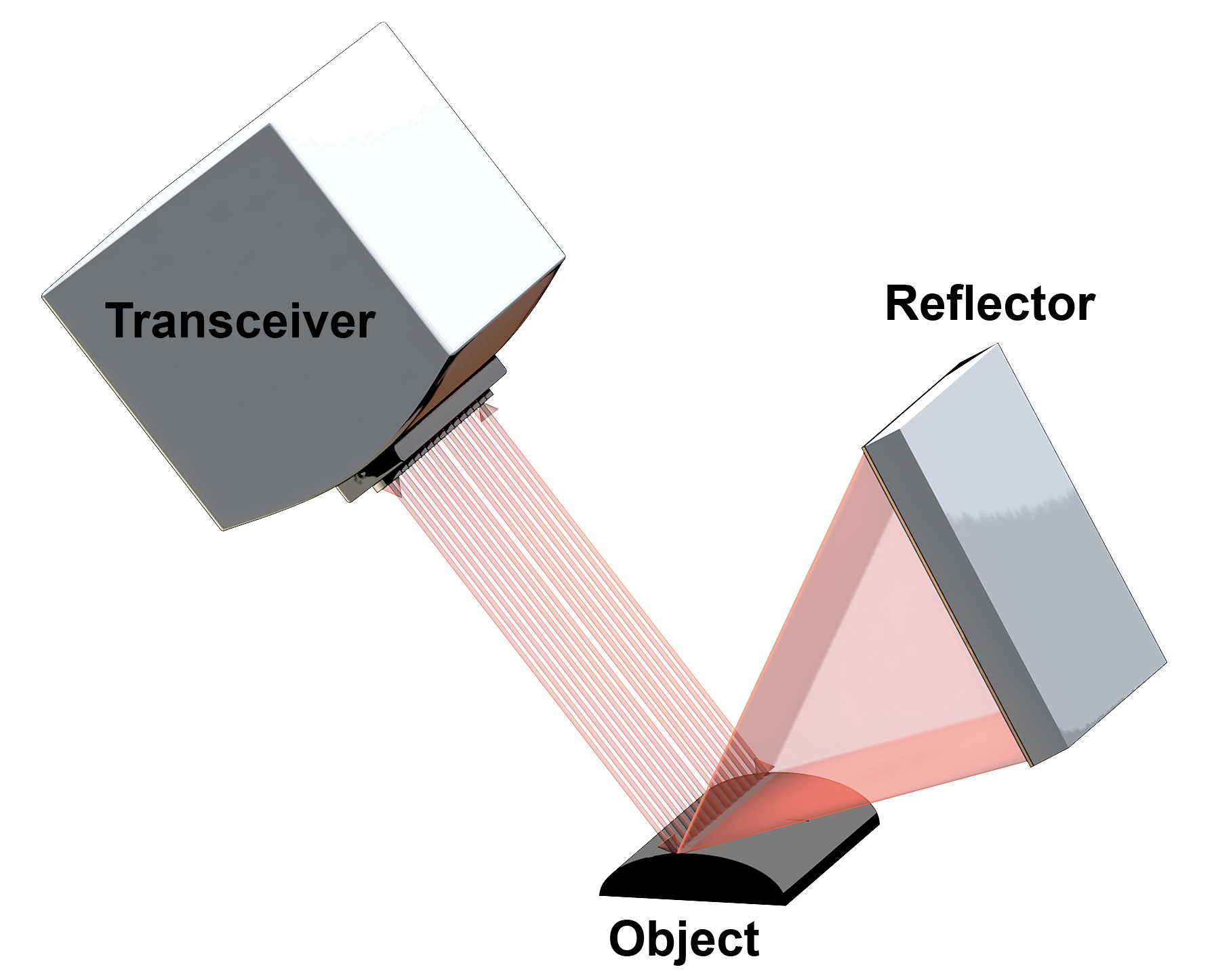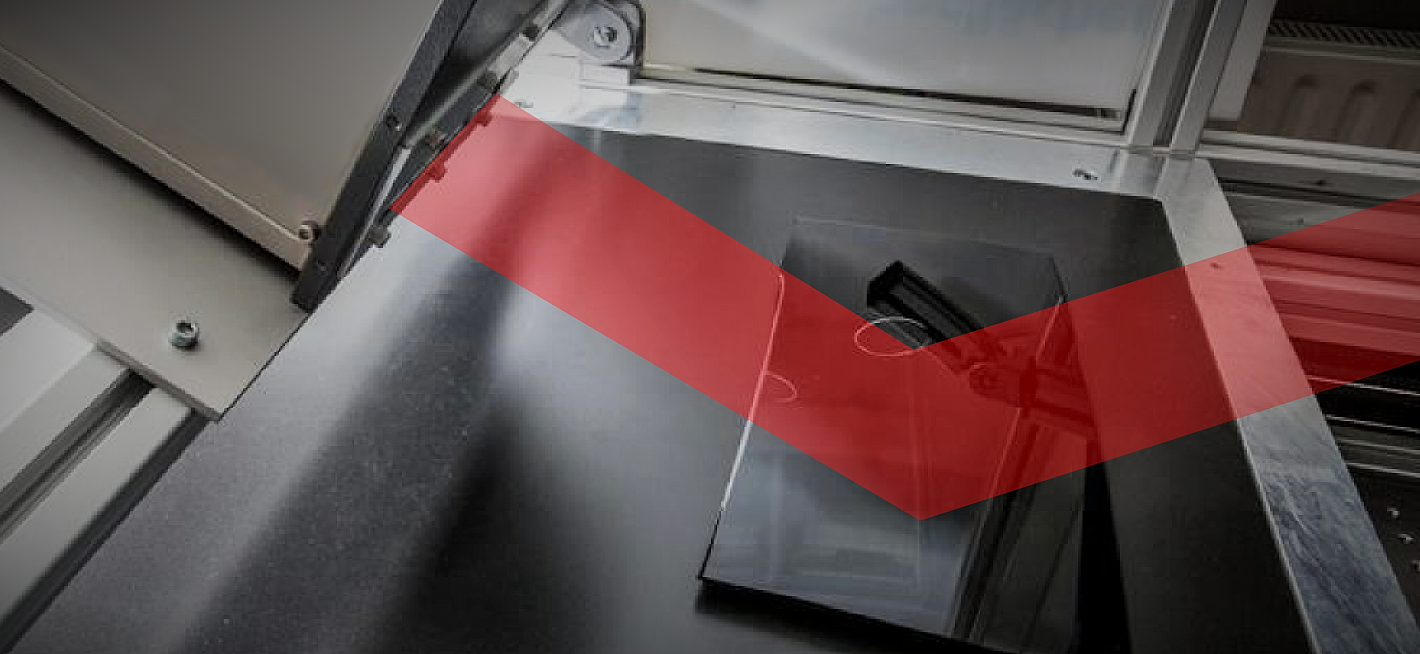At the Fraunhofer Institute of Optronics, System Technologies and Image Exploitation IOSB, Karlsruhe, a testing system has been developed which can determine the optical properties of surfaces and coatings inline in production processes. The system scans the surface of the test specimen with a laser beam in a continuous process. For each point on the surface, the changes in polarisation of the reflected light are measured and the optical properties are determined. This enables a complete inspection of the surface for cosmetic defects, material flaws or coating defects. In contrast to conventional ellipsometric inspection systems with separate transmitter and receiver unit and fixed angle of incidence and angle of reflection, the inspection can be carried out even if the surface is subject to strong changes in inclination. This allows, for example, the inspection of polished and painted metal or plastic surfaces as well as the inspection of functional layers from the automotive, microelectronics and sanitary sectors.
PuritySurf – system for the inspection of surfaces for reflectance or coating defects in throughput

Principle of operation
The new measuring principle uses retro-reflection to transmit polarised light and to detect the changed polarisation state in a single transmitter and receiver unit (transceiver). The surface is scanned by deflecting the light beam from a laser source. After reflection on the sample surface, the beam strikes a retroreflector. The retroreflector foil used maintains the polarisation state regardless of the angle of incidence (up to approx. 30°) and reflects the beam back into the irradiated direction without any offset. The particularly narrow scattering beam of the retroreflector has already been used for the measurement of small structures (approx. 100 ) and has been applied industrially in other inspection systems. In addition, the optical properties in the visual range are almost independent of the wavelength of the irradiated light. After being reflected again on the sample surface, the light beam returns to the transceiver where the polarisation state is detected simultaneously via four polarisation channels. Local changes of the polarisation state, which are caused by inhomogeneities in the coating, surface condition or material composition, can thus be detected.
Advantages and special features
The PuritySurf inspection system combines the advantages of a laser scanner for the imaging measurement of samples in a continuous flow with the possibilities of layer thickness and material characterisation of ellipsometry. By using a laser scanner, a very large depth of focus is achieved in addition to a high light intensity for the examination of dark samples. In contrast to imaging optics, this makes it possible to use imaging ellipsometry not only for very small measuring ranges, but also for seamless inline inspection of coated surfaces with variable height and/or variable surface inclination. Theoretically, a local resolution of 7000 pixels per laser line over a width of 15 cm can be achieved with the current prototype, but in practice this is limited to approx. 100 by the microstructure of the retroreflector. With the currently used monochromatic laser source (He-Ne-Laser) a wide range of applications can already be covered, such as the detection of surface defects or the determination of layer thickness of simple layer systems. The currently occurring, noisy sources of error can be minimised by time averaging and the resulting reduced data rate or local resolution and, depending on the application, adapted to the required accuracy. The high sampling rate leaves relatively much room for manoeuvre here. The remaining systematic errors can be eliminated by sensor calibration and, if necessary, a more accurate simulation model. An accuracy comparable to other point measuring ellipsometers is aimed for in the final product. In contrast to superstructures with separate transmitter and receiver units, however, the range of applications is greatly extended by the possibility of image-guided and gapless measurement of coated surfaces with variable surface geometry. A particular advantage for the user is the robustness against angle changes of the test specimen. An exact alignment is no longer necessary to obtain signals with this method.
 Fraunhofer Institute of Optronics, System Technologies and Image Exploitation IOSB
Fraunhofer Institute of Optronics, System Technologies and Image Exploitation IOSB 